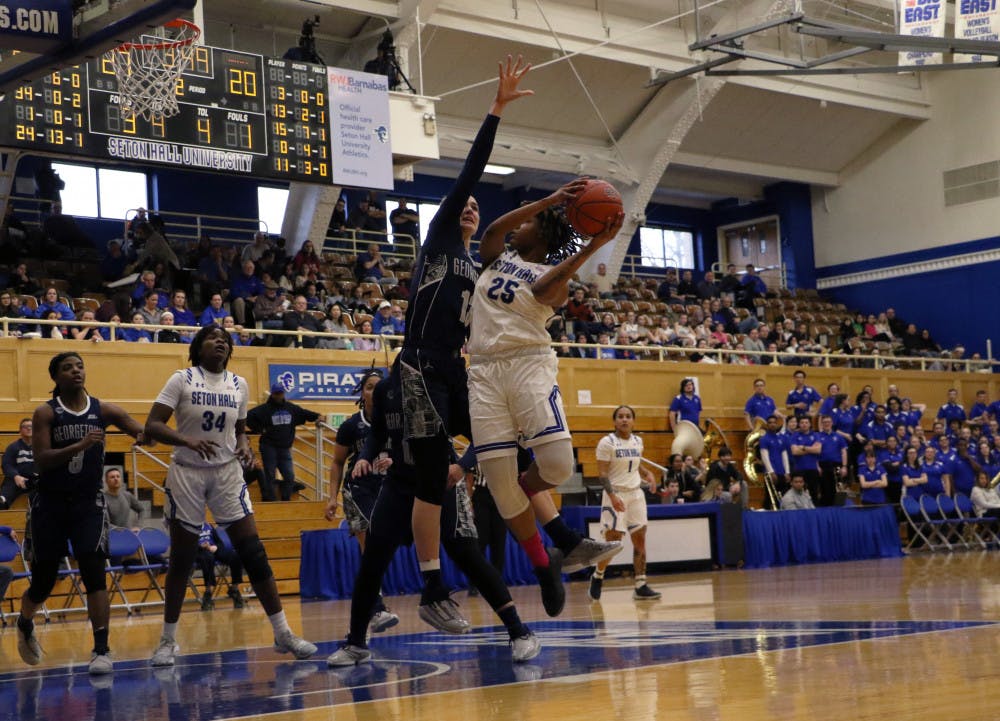
The Associated Press
In 2012, NCAA President Mark Emmert called the Jerry Sandusky sexual abuse scandal at Penn State University the most painful “chapter in the history of intercollegiate athletics.” Handing down a four-year postseason ban, a $60 million fine, and scholarship limitations, Emmert argued that the NCAA had never meted out a punishment like the one imposed on the Nittany Lions.
The punishment was generally viewed as harsh. But it has turned out to be more bark than bite.
Just before last weekend’s Big Ten game against Rutgers, Penn State found out that the NCAA had lifted the four-year ban after just two seasons. The University also will get all its scholarships back next year. The NCAA’s board of directors made the decision after Penn State's athletics integrity monitor, former Sen. George Mitchell, recommended that the ban be lifted.
For first-year head coach James Franklin and the players who stuck with the program, it was welcome news. Happy Valley is celebrating and the Nittany Lions are off to a 3-0 start of the season.
But the NCAA’s reversal has critics wondering what the association’s strict stance in 2012 really meant. The punishment made an impact on the university, which has worked with the NCAA accordingly, but the sanctions didn’t make an impact on the people who got Penn State in trouble in the first place.
While the NCAA issued a sharp punishment for University’s turning a blind eye to Sandusky’s crimes, it didn’t follow through in a way that sets a principled standard. The fact of the matter is that the association has no sense of equivalency in its handing down of punishments. From the issue of fairness to its member schools, to its continued opposition to paying student athletes while university athletic programs benefit richly from major college sports, and more, Emmert and the NCAA have acted in a way that raises serious questions about the governance of college sports.
But maybe it’s not that the NCAA is stuck in its own ways and simply refuses to change with these more complex times. Instead, maybe there simply aren’t even enough people working at the top of the association who are committed to making a transition for the better.
“The NCAA’s problem is that they are understaffed,” said one Seton Hall coach, who prefers to remain unnamed. “This has led to inconsistencies in their rulings. The few at the top are overseeing a multi-billion dollar company. They are not staffed adequately.”
The 351 member schools, which are arguably the most important part of the NCAA, have not done much on their own to strengthen and improve the way college sports are handled. A powerful few dominate. In August, the 65 “power” schools from the ACC, Big 12, Big Ten, SEC, and Pac 12, along with Notre Dame, voted to be granted separate autonomy from the rest of the association. According to ESPN, just some of the new rules that the power 65 can regulate on their own—without having to deal with the rest of the NCA --will be cost-of-attendance stipends and insurance benefits for players, staff sizes, recruiting rules and mandatory hours spent on individual sports.
Not being a member of the power 65, Seton Hall and many other smaller programs are left is in a tough spot, especially for the non-major sports.
“The policies are inconsistent,” said one cross country runner who preferred to not be named. “My experience as a Seton Hall athlete has been absolutely outstanding. But when I look at the current state of the NCAA, it is a concern because much of what they do is murky to me.”
Until the NCAA can clarity what it expects from its members, it will be unable to set adequate standards for the universities it governs. Nor can it provide sufficient protections for the student athletes whose well-being ought to be the association’s priority.
John Fanta can be reached at john.fanta@student.shu.edu and on Twitter @John_Fanta.





